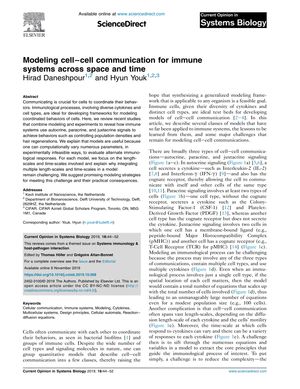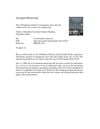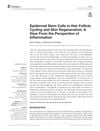Modeling Cell-Cell Communication for Immune Systems Across Space and Time
November 2019
in “
Current Opinion in Systems Biology
”

TLDR The document concludes that computational models are useful for understanding immune responses and could improve cancer immunotherapy.
The document from 2019 reviews studies on modeling cell-cell communication within immune systems, emphasizing the complexity of integrating spatial and temporal dynamics due to the variety of cell types and cytokines involved. It highlights the use of models to computationally analyze immunological responses, such as the role of IL-2 in CD4+ T-cell population density control and the stable maintenance of cell density ratios between fibroblasts and macrophages through negative feedback. The review also discusses a model that identified 48 circuit topologies capable of maintaining stable cell ratios, the quorum-sensing mechanism in hair follicle regeneration in mice, and the potential of reaction-diffusion equations combined with cellular automata for modeling immune responses. Additionally, it underscores the potential benefits of a comprehensive model for optimizing CAR-T cell therapies in cancer immunotherapy, despite the current lack of such a model to fully understand and optimize the complex processes involved in immune responses.


